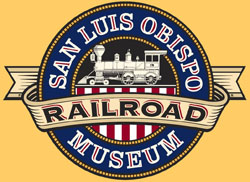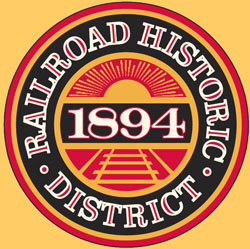From the Summer 2025 Issue of "Coast Mail" (#92)
A Very Tall Signal
Southern Pacific's steam-era automatic block signals, first semaphores then "target" style color lights,
were tall. But the record holders for height were the
train order signals, often referred to as order boards
because they were simply that, flat panels with no
integral lights. (Some had lamps on or near them to
make the arms more visible, as does the Museum's.)
With time-table and train-order traffic control, written
train orders were essential for safe movement. They
shared decades with hand-thrown and spring switches
(page 5). Their message was simple: if the arm was
horizontal, a train must obtain a written order or clearance by the station operator before proceeding.
One BIG Rivet
Because the large rivet shown (in the newsletter) was found
below the Stenner Canyon trestle north of San Luis
Obispo, it's almost certainly from that bridge. It was
recently donated to the Museum by Kevin Kirschner.
Unlikely to be a pin for another purpose, the reason for
its length is a mystery. Can a reader provide the answer?
Responding to Fire
Glowing embers from built-up soot (even from the
exhaust vent of a diesel locomotive); a fragment of a
red-hot brake shoe; tumbleweeds blowing across a
welding site. Combined with creosoted ties, nearby
brush, and remote locations, such incidents could lead to
serious problems. Fire suppression tools included barrels
of water or sand with nearby buckets, pressurized fire
extinguishers, shovels, and the bag shown above (in the newsletter), which
was worn backpack-style. The bags typically used whatever water was at hand, but they could also use fireretardant solutions. Prevention was always the first
line of defense. But once a fire started railroads had a
range of tools to fight it, including tank cars equipped
with pumps. The Winter 2015 Coast Mail featured
water cars and a fire bucket at San Luis Obispo.
And much more...


